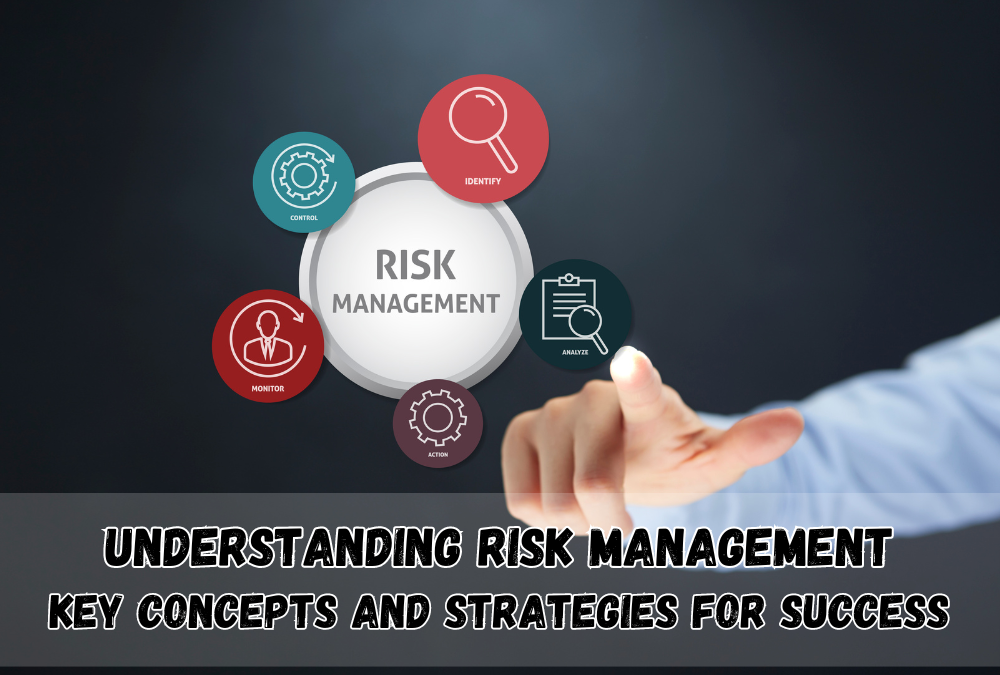In the modern era of rapid globalization and technological advancement, businesses encounter a wide array of risks that have the potential to significantly affect their day-to-day activities, financial stability, and overall reputation. Whether it’s the unpredictability of markets, the looming specter of cyber threats, the vulnerability to natural calamities, or the constant shifts in regulatory landscapes, the spectrum of risks is expansive and continually evolving. In this dynamic environment, adept risk management isn’t merely an advantageous quality but an indispensable requirement for businesses to not only flourish but also endure the challenges they confront. So, what exactly is risk management, and how can businesses navigate through it successfully? Let’s delve deeper into this topic, exploring key concepts and strategies that can help organizations mitigate risks and seize opportunities.
In conclusion, risk management is a vital aspect of organizational success in today’s uncertain world. By understanding key concepts and implementing effective strategies, businesses can proactively identify and mitigate risks, thereby safeguarding their assets, reputation, and long-term viability. Embracing risk management as a strategic imperative enables organizations to turn potential threats into opportunities for growth and innovation, ultimately driving sustainable value creation. By prioritizing risk management and fostering a culture of resilience, organizations can navigate through uncertainties with confidence and emerge stronger in the face of adversity.
What is Risk Management?
Risk management can be defined as the process of identifying, assessing, and prioritizing risks followed by coordinated efforts to minimize, monitor, and control the impact or probability of unfortunate events. It is about understanding uncertainties and making informed decisions to protect and enhance organizational objectives.Key Concepts in Risk Management
- Risk Assessment: Once risks have been identified, it’s essential to evaluate their likelihood and potential impact. This evaluation aids in prioritizing risks according to their severity, allowing organizations to allocate resources effectively.
- Risk Mitigation: Following risk assessment, organizations formulate strategies to mitigate or minimize their impact. This could entail implementing control measures, transferring risks through insurance or contractual arrangements, avoiding specific activities altogether, or accepting the risk while having a contingency plan in place.
- Risk Monitoring and Control: Managing risk is a perpetual endeavor demanding constant vigilance and adaptation. Organizations must institute systems to monitor shifts in risk elements and assess the efficacy of mitigation tactics. This agility empowers them to promptly address evolving challenges and emerging threats.
Strategies for Successful Risk Management
- Develop a Risk Management Framework: Establishing a comprehensive risk management framework provides a structured approach to identify, assess, and manage risks across the organization. This framework should align with the organization’s objectives, culture, and risk appetite.
- Embed Risk Management into Organizational Culture: Risk management should not be viewed as a standalone function but integrated into the organization’s culture and decision-making processes. This requires leadership commitment, employee engagement, and regular training to foster a risk-aware mindset at all levels of the organization.
- Utilize Technology and Data Analytics: Leveraging technology and data analytics can enhance the effectiveness of risk management efforts. Advanced analytics tools can help identify emerging risks, predict potential outcomes, and optimize decision-making processes. Additionally, automation can streamline risk assessment processes and improve response times.
- Diversify Risk Management Strategies: Adopting a diversified approach to risk management can provide greater resilience against unforeseen events. This includes spreading risks across different business units, geographic locations, and financial instruments. Diversification helps mitigate the impact of individual risks and reduces the likelihood of catastrophic losses.
In conclusion, risk management is a vital aspect of organizational success in today’s uncertain world. By understanding key concepts and implementing effective strategies, businesses can proactively identify and mitigate risks, thereby safeguarding their assets, reputation, and long-term viability. Embracing risk management as a strategic imperative enables organizations to turn potential threats into opportunities for growth and innovation, ultimately driving sustainable value creation. By prioritizing risk management and fostering a culture of resilience, organizations can navigate through uncertainties with confidence and emerge stronger in the face of adversity.

